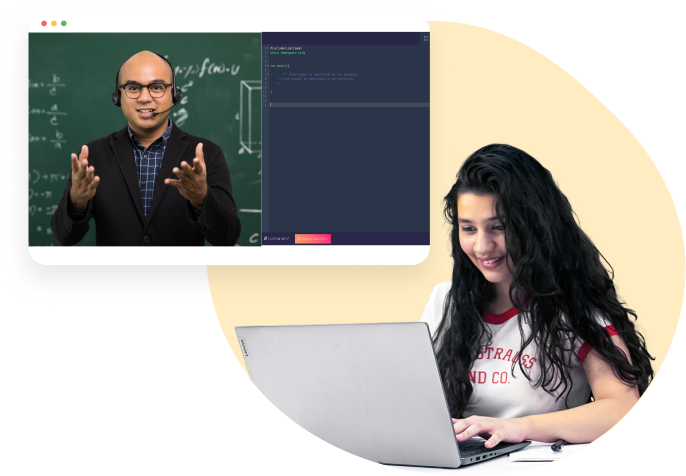Python for Data Science
Home
Data Science
Python for Data Science
Zero to Master Program
Python for Data Science
Python for Data Science is an essential course designed to introduce learners to the powerful capabilities of Python in handling, analyzing, and visualizing data. This course covers the basics of Python programming, including data types, control structures, functions, and libraries such as NumPy, Pandas, Matplotlib, and Seaborn. Students will learn how to manipulate data using Pandas, perform statistical analysis, and create stunning visualizations to uncover insights. The course also delves into machine learning fundamentals using libraries like Scikit-learn, enabling students to build and evaluate predictive models. Practical examples and hands-on projects throughout the course ensure that learners gain a solid understanding of applying Python to real-world data science problems. By the end of the course, participants will be equipped with the skills needed to tackle data-driven challenges and make informed decisions using Python.
4.8
12K+ Learners enrolled

This is where you embark on an amazing journey!
Most flexible program in the industry

Freedom to learn
Watch classes any time at your convenience

Cheat days
Catch up on the course when life is calling you elsewhere

Features that keep you going

A structured curriculum that makes learning easy

Practice code problems of varying difficulty

Engagement coach to keep you motivated

Compile & run in an integrated coding environment

Get doubts resolved in 30 mins
1:1 sessions over voice call & chat with our
skilled teaching assistants

Industry leading mentors to help you grow

1:1 Mock interviews with resume and career guidance

Structured feedback to make you better

Get a chance to be referred to your mentors’ company

Experience a seamless job switch
with hiring assistance
Skill-based hiring across all levels of experience

The results

7000+
Transitions to product companies

250+
Trusted placement partners
Frequently asked but seldom read questions
Yes, this course is entirely offline, and we offer some courses online as well.
Basic understanding of programming concepts is helpful but not mandatory. Familiarity with high school level mathematics, particularly statistics, will be beneficial.
A standard computer with at least 4GB of RAM should be sufficient for most tasks. However, for more advanced machine learning tasks, a computer with more RAM and a better processor will be helpful.
Prior knowledge of Python is not necessary. The course will cover Python basics before moving on to more advanced topics.
The course projects are designed to mimic real-world data science problems. By working on these projects, you will gain practical experience that you can apply to professional or personal data science tasks.
Submissions are evaluated based on criteria such as correctness, completeness, critical thinking, and adherence to instructions, typically using rubrics or grading guidelines provided by the instructor.
Meet the faculty legends that will make you legendary
Praveen has a full stack development experience and professional
instructor and trainer for Flutter,
Data Science, Machine Learning and Python Programming. Over the
course of his career he has developed a skill set in analyzing data
and he hopes to use his experience in teaching and data science to
help other people learn the power of programming,
the ability to analyze data, and the skills needed to present the
data in clear and beautiful visualizations.
He is an expert in JavaScript & React (Front-end) and has worked on
open-source projects like Firebug and Zulip.
He has also served as a GCI (Google Code-In) Mentor with Zulip. In
his previous role as a Software Engineer he has worked for
Goibibo-MMT.
Course curriculum for the curious
-
-Overview of Python and its applications in Data Science
-
-Setting up the Python environment (Anaconda, Jupyter Notebooks, etc.)
-
-Basic Python syntax and data types
-
-Control structures: loops and conditional statements
-
-Lists, Tuples, and Sets
-
-Dictionaries
-
-List comprehensions
-
-Introduction to NumPy
-
-Creating and manipulating arrays
-
-Array operations
-
-Working with multidimensional arrays
-
-Statistical operations with NumPy
-
-Introduction to Pandas
-
-DataFrames and Series
-
-Reading and writing data (CSV, Excel, SQL, etc.)
-
-Data cleaning and preparation
-
-Data transformation and merging
-
-Grouping and aggregation
-
-Introduction to Matplotlib
-
-Creating basic plots (line, bar, scatter, histogram)
-
-Customizing plots (labels, legends, styles)
-
-Introduction to Seaborn for advanced visualizations
-
-Exploratory Data Analysis (EDA)
-
-Descriptive statistics
-
-Handling missing data
-
-Outliers detection and treatment
-
-Overview of machine learning concepts
-
-Supervised vs. unsupervised learning
-
-Introduction to Scikit-Learn
-
-Building a simple linear regression model
-
-Model evaluation metrics
-
-Introduction to SQL
-
-Connecting Python to databases
-
-Performing CRUD operations using SQL and Pandas

































